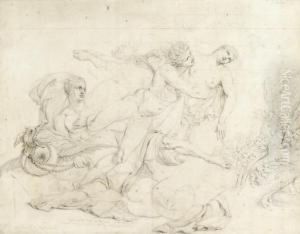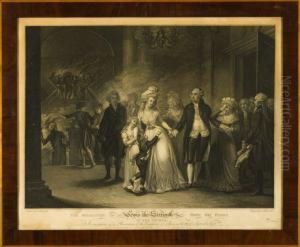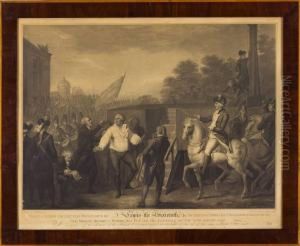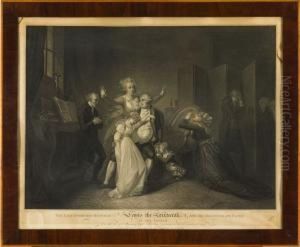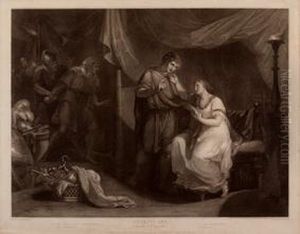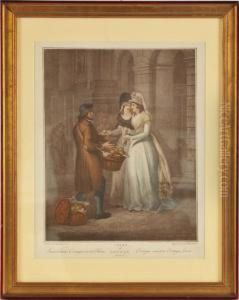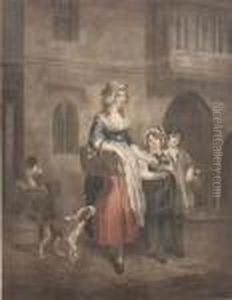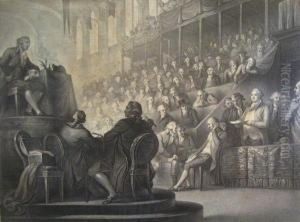Luigi, Lewis Schiavonetti Paintings
Luigi Schiavonetti, also known as Lewis Schiavonetti, was an Italian engraver who made significant contributions to the art of printmaking during the late 18th and early 19th centuries. Born in Bassano del Grappa, Italy, in 1765, Schiavonetti moved to England in his early twenties and spent most of his career there, becoming an influential figure in the British art scene.
Schiavonetti trained under the renowned engraver Giuliano Giampiccoli in Venice before relocating to London in 1789. He was taken under the wing of the celebrated British artist and publisher Joseph Banks, which helped him gain entry into the London art world. Schiavonetti's skills in the art of stipple engraving, a technique that uses dots to create tonal effects, and etching quickly earned him recognition among his contemporaries.
One of Schiavonetti's most notable works is his reproduction of the 'The Canterbury Pilgrims,' based on a painting by Thomas Stothard. This engraving won him great acclaim and solidified his reputation as a master of his craft. He also worked on reproducing the drawings of famous artists like William Blake, whose unique and visionary works posed significant challenges for replication. Schiavonetti's engravings of Blake's illustrations for Robert Blair's poem 'The Grave' are particularly celebrated, as they successfully convey the mystical and ethereal qualities of Blake's original watercolors.
Throughout his career, Schiavonetti was involved in various important projects. He contributed to Boydell's Shakespeare Gallery, which aimed to promote British art through a large collection of paintings and engravings depicting scenes from William Shakespeare's plays. His work was also featured in the satirical publication 'The Caricature Magazine,' which showcased his versatility as an artist.
Sadly, Luigi Schiavonetti's life was cut short by an illness, and he passed away on June 7, 1810, in London. Despite his relatively brief career, his impact on the art of engraving was profound, and his works continue to be appreciated for their delicate technique and artistic beauty. His legacy is also preserved in the collections of various museums and galleries, including the British Museum and the Victoria and Albert Museum, which hold examples of his fine stipple engravings and etchings.
